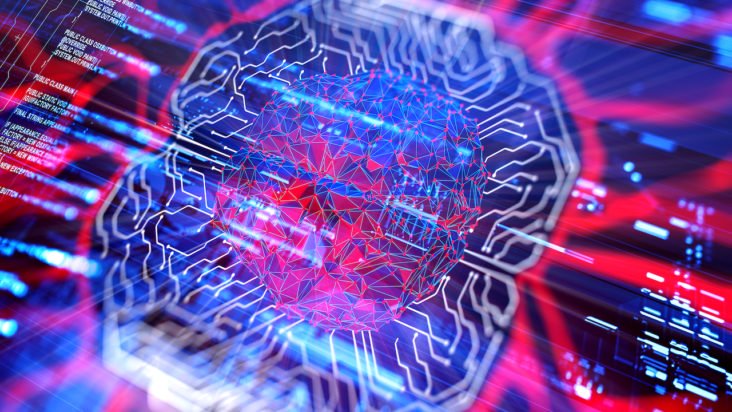Source: gizmodo.com.au
When some people hear the term ‘artificial intelligence’ their initial reaction is to imagine a dystopian future where robots have risen up and overthrown humanity. The truth is, application of AI technology in our day-to-day lives is a lot less sinister. It might not be long before these technologies become common in our everyday lives.
It’s currently assisting with medical diagnosis, the creation of autonomous cars and to help improve businesses by analysing data and creating accurate forecasts of client or market behaviour. The application of AI is becoming more and more popular in businesses worldwide, with the potential to improve our lives in unexpected ways.
A Helping Hand
You may not have realised it, but AI technology could already be playing a role in your life. If you happen to use one of the various virtual assistants currently available on the market, like Amazon’s Alexa, Apple’s Siri or Google Assistant, you are directly engaging with AI. These assistants are able to process data fed to them by their users, and use machine learning to tailor responses that fit their owner’s needs.
In 2019, OpenAI trained a pair of neural networks to solve a Rubik’s Cube with a human-like robot hand. This was achieved by teaching the AI through reinforcement learning, exposing it to a series of randomised simulations. On the surface, solving a Rubik’s Cube may seem like a weird application of AI, but the development and results from this technology can help with the creation of robots that have human-level dexterity.
According to IBM Developer Advocate Steve Coochin, AI systems – such as IBM’s Watson – have the potential to be applied to “virtually any scenario, industry or organisation to streamline processes, increase effectiveness, and accelerate progress.”
“One example is Prometeo, from our Call for Code hackathon,” Coochin explains, “an AI solution which uses machine learning to monitor and support firefighter health and safety in real-time while they are putting out fires.”
“Using Watson Machine Learning predicative model, the technology can reply in real time with a green, yellow, or red firefighter status to the fire station.”
AI-Assisted Agriculture
Artificial intelligence technology is currently being used to help keep Australia’s bee industry alive through biosecurity. Bega’s recent Purple Hive Project is designed to help stop entire hives from being wiped out by using AI technology to detect whether bees are carrying the Varroa mite. This tiny parasite attaches itself to unsuspecting bees, feeding on their blood and can spread viruses that can devastate entire colonies.
These bright purple hives are equipped with 360-degree cameras that scan each bee that enters. Using AI technology, it can detect whether or not a bee is carrying the Varroa mite. If a bee is a confirmed carrier, the hive will send an automatic alert to the beekeepers so they can quarantine the hive.
By making sure Australia’s bee population remains healthy, this AI technology is also helping to keep our local agriculture industry alive as, according to the CSIRO, “one in every three mouthfuls of food that we consume comes to us through the aid of pollination by honeybees.”
AI has the great potential to help improve pre-existing software and information technologies, but there’s also the possibility of it being used for entertainment purposes, too. One of the more popular, recent examples of this would be AI Dungeon. It’s a free text-based adventure game that creates unique stories by auto-generating responses based on what the player types.
AI Dungeon uses a language model known as Generative Pre-trained Transformer (GPT-3), which allows for deep learning to produce human-like text. Depending on which genre setting you choose at the start of the game, AI Dungeon will procedurally generate a story based on previous learnings and your inputs, which, for the most part, will read as a coherent story.
One of the stranger applications of it is the website DeepArt, which creates AI-assisted art. This platform uses an algorithm to pull stylistic elements from a chosen image and apply it to another. For example, you can upload a normal photo of your bedroom and use DeepArt’s algorithm to make it look like Vincent van Gogh’s ‘The Starry Night’ or Paul Cézanne’s ‘The Large Bathers’.
Get Involved in the Future of AI
These various applications of AI technology may sound interesting, but how can you become a part of this expanding frontier? Enrolling in one of Billy Blue College of Design at Torrens University Australia’s software engineering or digital transformation-based courses, such as a Bachelor Of Software Engineering (Artificial Intelligence) or Graduate Certificate of Digital Transformation and Creative Intelligence, will let you begin your adventure into creative technology, opening you up to the world of AI development.
To make sure you get the most from these courses, they’ve been developed in collaboration with IBM, who are currently leading the pack when it comes to AI. According to the IDC Market Share, IBM has been ranked the market share leader for the third year running.
IBM have become the frontrunners in the world of artificial intelligence for a few reasons. Firstly, the sturdy information architecture of their Cloud Pak for Data helps businesses by using automated AI to collect, organise and analyse data, making it easy to manage and access. They’ve also aimed for transparency when it comes to the development of AI technologies. Their Watson OpenScale platform allows business’ to measure and track the deployment of AI technology to meet set outcomes, allowing for a clearer explanation of how they work.
Billy Blue will teach you important skills used in AI development, such as design thinking, creative intelligence and human centred design, as well as giving you the tools to learn about topics like computer vision, natural language processing and machine learning. Through their collaboration with IBM, they hope to put this technology into your hands. With these tools — along with your imagination — you’ll be able to discover the vast possibilities within the field of AI technology.


